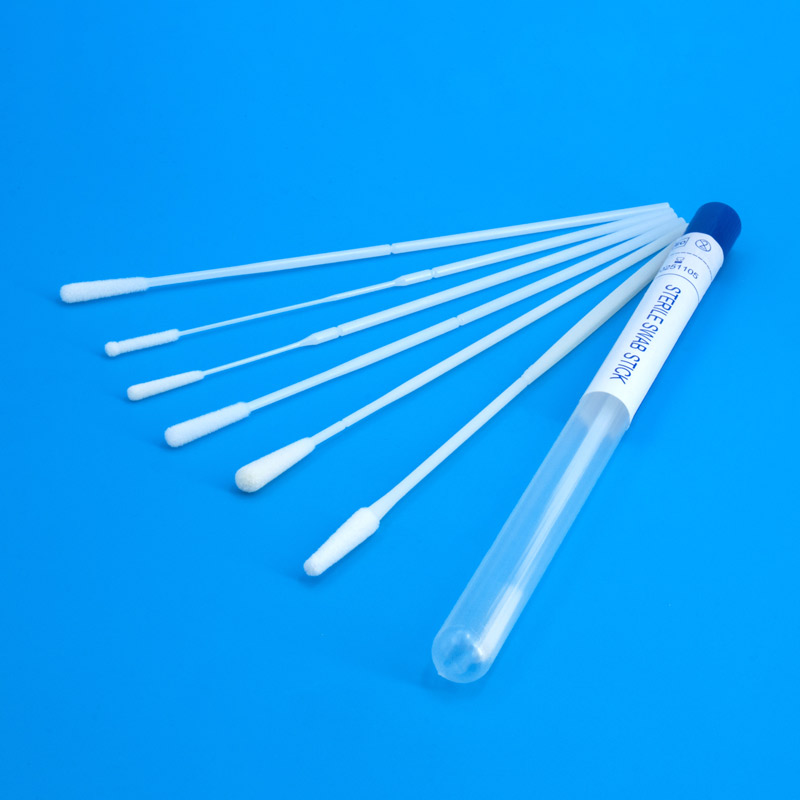Nasenabstriche sind weit verbreitet und haben sich zu einem Eckpfeiler der Gesundheitsversorgung und klinischen Diagnostik entwickelt, insbesondere zur Diagnose von Infektionskrankheiten.
In diesem Zusammenhang, Ihr Hauptzweck besteht darin, Atemwegsproben von Patienten zu sammeln.
Dadurch kann das Vorhandensein von Krankheitserregern erkannt und eine entsprechende Behandlung eingeleitet werden.
Die Bedeutung von Nasenabstrichen bei der Diagnose von Infektionskrankheiten

Grippe
Nasenabstriche werden üblicherweise zum Nachweis von Influenzaviren verwendet, Helfen Sie medizinischem Fachpersonal dabei, den spezifischen Stamm zu identifizieren und dementsprechend antivirale Medikamente zu verschreiben.
Respiratorisches Synzytial-Virus (RSV)
Respiratorisches Synzytial-Virus (RSV):
RSV ist ein weit verbreitetes Atemwegsvirus, das schwere Erkrankungen verursachen kann, insbesondere bei Säuglingen und älteren Menschen.
Daher sind Nasenabstriche für die Diagnose von RSV von entscheidender Bedeutung, Dies ermöglicht eine schnelle Behandlung und unterstützende Pflege.
COVID-19
Denn die anhaltende COVID-19-Pandemie zeigt die wesentliche Rolle von Nasenabstrichen bei groß angelegten Testbemühungen.
Daher war eine schnelle und genaue Diagnose einer SARS-CoV-2-Infektion von entscheidender Bedeutung für die Eindämmung der Ausbreitung des Virus und die Information über Maßnahmen im Bereich der öffentlichen Gesundheit.
Erkennen
Nasenabstriche spielen eine entscheidende Rolle beim Nachweis von Krankheitserregern in Atemwegsproben.
Nutzen
Vorteile der Verwendung von Nasentupfern im klinischen Umfeld Nasentupfer können Ihrem Arzt dabei helfen, die Art Ihrer Atemwegsinfektion zu diagnostizieren.
Und welche Behandlung für Sie am besten wäre, Nasenabstriche werden verwendet, um spezifische Signaturen zu erkennen 10 zu 15 bekannte Viren.
Rolle
Rolle von Nasentupfern bei der Arzneimittelentwicklung und klinischen Studien
A. Untersuchung der Wirksamkeit neuer Behandlungen für Atemwegsinfektionen:
Mit Nasenabstrichen werden Proben von Studienteilnehmern gesammelt, um die Wirksamkeit neuer Medikamente und Therapien gegen Atemwegsinfektionen zu beurteilen.
Denn durch die Analyse der gesammelten Proben, Forscher können feststellen, ob die Behandlung die gezielten Krankheitserreger erfolgreich reduziert oder eliminiert.
B. Überwachung der Sicherheit neuer Medikamente bei Studienteilnehmern:
Nasenabstriche können zur Überwachung der Sicherheit neuer Medikamente während klinischer Studien eingesetzt werden.
Durch das Sammeln von Atemwegsproben während des gesamten Versuchs, Forscher können mögliche Nebenwirkungen oder Komplikationen im Zusammenhang mit dem Medikament identifizieren.
Dann stellen wir sicher, dass nur sichere und wirksame Behandlungen auf den Markt kommen.
Anwendung
Beispiele für Nasenabstrichanwendungen in der Industrie
Während ein einfacher Nasenabstrich die Diagnose von Lungenkrebs bei Rauchern revolutionieren kann, die sich einem CT-Screening unterzogen haben und bei dem Lungenknötchen festgestellt wurden.

















